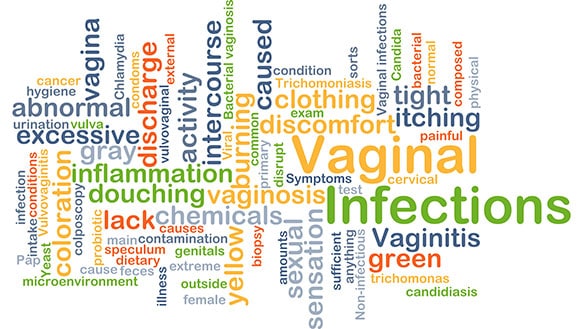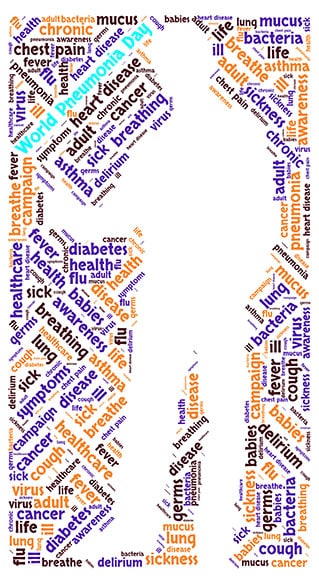
If you tend to get yeast infections that are difficult to resolve, it could be a sign that you have diabetes. They are more common in people with this chronic condition.
Such infections are caused by a fungus called candidiasis. Severe itching, discharge from the area affected and irritation of the affected area are hallmark signs of a yeast infection. Diabetes is just one of the conditions that can increase your risk of having them somewhere in your body.
Women tend to get them more frequently in their vaginal area, but there are many other places that they can occur. In this article, we will look at why diabetes increases your risk of developing fungal infections such as yeast infections.
Though yeast is always growing in our bodies, it can present a problem by upsetting our body’s delicate balance if it overgrows. Bacteria, which is considered as our “normal flora,” or bacteria that is present in our body as part of our normal make-up, can also overgrow and offset yeast growth. Both situations would require attention and treatment.
Contents
Cynthia’s story
When Cynthia came in for diabetes education, she looked visibly uncomfortable. She couldn't stop moving around in her seat in the clinic room. When asked what was wrong, Cynthia sighed and relayed how she had these nagging vaginal yeast infections that wouldn’t go away.
She had been to the doctor three times this year. During her first visit, they gave her crème for treatment, and the second time, she was prescribed to take two rounds of pills, one pill each week for two weeks. Despite her best efforts, her infection had come back.
We had been working on Cynthia’s blood sugars. Her A1C was 8.4% and her blood sugars were out of her target range. She hadn’t made much progress so far. Her blood sugar logs that day also showed blood sugars higher than her target.
We discussed how hard it was for her to get rid of it because her blood sugars weren’t managed well. A lightbulb went off in Cynthia’s mind and she finally felt motivated to get her blood sugars down.
Normally, Cynthia didn’t have many symptoms of her diabetes besides feeling a bit fatigued sometimes. She hadn’t felt the need to get her numbers down when most of the time she felt fine.
Realizing that her blood sugars might be responsible for the persistent vaginal itching that she was experiencing, she finally wanted to work on her diabetes and get her blood sugars down and her A1C below 7%. We worked on a plan for Cynthia to do just that, and now that she has her blood sugars under control, she hasn’t had another infection.
Let’s find out why people with diabetes can get more yeast infections than other people do, and why getting them frequently could be a sign of your undiagnosed diabetes…
Causes of yeast infection due to diabetes
The reason that someone with diabetes gets more yeast infections is due to high blood sugar and a few other factors, which we will discuss below. The stickiness of blood sugar provides a host environment for the bacteria to grow and thrive.
Medications don’t help in killing off all the buds growing due to the environment for them remains high in sugar. It’s a vicious cycle that’s not remedied until blood sugars are brought into a target range and A1C comes down.
Fungal infections can be passed from one person to another during sexual intercourse. However, it is not considered a sexually transmitted disease.
I suggest reading the following articles:
- I Lost a Relative Because of Diabetes, Will This Happen To Me?
- How To Prevent Hospitalization As A Result Of My Diabetes Part 1
- Should I Tell Others About My Diabetes, Or Keep it a Secret?
- What a High Blood Sugar Feels Like? Signs & Symptoms of Hyperglycemia
- How Can Restaurants Help Customers With Diabetes?
- Diabetes and Urinary Tract Infections – Things You Need To Know
How is it a symptom of diabetes?
It can be a symptom of uncontrolled diabetes due to several factors:
High blood sugars
An overgrowth of yeast resulting in an infection is primarily due to high blood sugars as it grows when sugar is present. If diabetes hasn’t been controlled well, blood sugars are not in a target range and A1C is not below 7%, it’s likely that someone with diabetes will get more infections.
It can grow more rapidly when blood sugars are high. Sugar is found in sweat, urine and mucous secretions. Therefore, any part of the body where any of the those three are found, sugar will be higher in that area. The fungus will be more likely to grow in this sweet, sticky medium.
Glycogen stores
Glycogen is used to hold and store sugar. For people with diabetes, there is an increased amount of glycogen, which also provides more opportunity for the yeast to take hold and overgrow.
Having high blood sugars slows down the immune system
In 2015, a research study showed that high blood sugars do indeed slow the immune system in our body down, which may in part account for why yeast infections are hard to get rid of in the diabetes population.
It takes hold by forming a colony of yeast buds. With a large amount of sugar present, these buds may never fully die off, even with treatment.
However, once treatment is stopped, they start to divide and multiply rapidly. Therefore, recurrent infections in people with diabetes and uncontrolled blood sugars may be one that never really goes away.
In Type 1 Diabetes
As women are particularly susceptible to vaginal infections, a study done in 2013 showed that Type 1 Diabetes and vaginal yeast infections were in fact linked to each other. Higher blood sugars correlated with an increased incidence of vaginal infections due to yeast. The study found a direct link between high blood sugars in women and children with T1D.
In Type 2 Diabetes
In 2014, researchers found that women with Type 2 Diabetes are at an even greater risk. The researchers were unable to conclude if this was due only to high blood sugars or another factor.
Recognizing signs
Other than vaginal yeast infections common in women, they can occur anywhere on the skin where there is a moist environment and high blood sugars. Let’s look at the signs and symptoms of the different kinds that can occur.
Vaginal yeast infections
These are particularly aggravating for women because they cause severe itching on the labia of the vagina and the skin surrounding the vagina with irritation of the vaginal wall itself. There may be irritation of the vaginal wall, or if severe, they may extend to the skin on and around the vagina.
On top of the itching which can be incredibly uncomfortable, there is often a thick, white, “cottage cheese” type discharge. It may or may not have an odor. Painful intercourse is also an issue because of its presence on the genitals in both men and women.
Often, infections to the vagina can occur alongside other infections such as Bacterial Vaginosis (BV), which is also more common in women with diabetes and requires medication and treatment. Either of the two can travel to other areas and cause severe problems if left untreated.
Infection of the skin
Infections of the skin can occur just about anywhere in men or women. A reddened area of skin with some clear drainage from tiny fluid-filled bumps can develop and spread rapidly if blood sugars are high with diabetes, for example, or if the area is provided with a moist environment for yeast to grow.
Prime places for this to occur are in skin folds and underneath breast tissue. Overweight and obese individuals may have more difficulty with this, and they are also more likely to have diabetes. Skin can be affected between fingers or between toes. Nail beds can also help them in developing. The groin area is a prime location for the fungus to take hold in both men and women.
Men may get scaly or bumpy patches in skin folds or on the genitals. Localized redness and inflammation occurs, accompanied by itching and spreading of the infection to all moist areas in the vicinity. You can read more on Eric Bakker's blog.
Infection of the mouth
Another type of infection that can occur is commonly called “Thrush.” White patches that won’t wipe off with a wet washcloth develop on the mouth, tongue, and cheeks. Infants often get this early on. It’s related to an immature immune system and possibly the antibiotics given at birth, rather than related to diabetes or other chronic conditions.
Diagnosing yeast infection
To diagnose the one of the vagina, visit your gynecologist. Sexually transmitted diseases have similar symptoms to vaginal yeast infections. Some common STDs that can mimic a such infection are trichomonas, chlamydia, gonorrhea, as well as one we’ve mentioned here already, Bacterial Vaginosis (though this is not considered an STD)
If it is an STD, and not a yeast infection, leaving it untreated can result in serious damage to female reproductive organs, arthritis (chlamydia) and more health problems.
The doctor will take a look at your history and physical and look at any medications being taken, especially antibiotics that could upset the pH balance in the vagina and cause yeast to overgrow. The doctor will perform an examination of the pelvis using a speculum, which is inserted into the vagina.
After an exam for external symptoms has been done, the doctor will obtain a vaginal swab to send off to a laboratory. The laboratory will check the sample of vaginal secretions for the Candida fungus, bacterial vaginosis, and STDs. This way, you will be sure about the diagnosis of the vaginal yeast infection if found, and that no co-existing STDs are present.
The laboratory will also identify the type of infection that you have. Some varieties are especially problematic to get rid of, so it’s good to know what type of fungus it is so that the appropriate medication can be prescribed.
If you have recurring infections but aren’t diagnosed with diabetes, discuss whether you should have a screening for diabetes. This can be done at your primary care provider office. If you need a screening for diabetes, set an appointment to get a check-up and necessary blood screenings.
Related articles:
How can I reduce the risks?
If you have diabetes, you can see your gynecologist regularly for screenings related to vaginal yeast infections. Any time you notice the signs and symptoms mentioned above, you can notify your health care provider.
If it becomes obvious that you are having many with no space between which amounts to one continual run, you need to make sure your diabetes is well-managed. Get your blood sugars and A1C down now and keep them within your target ranges to allow the medications prescribed to you to work and get rid of them once and for all.
Stay on a healthy diet, count carbohydrates and eat whole grains high in fiber, and get plenty of exercise and sleep to help manage your diabetes.
What increases the risk?
Diabetes and high blood sugars increase the risk of getting these fungal infections. There are other things, such as using perfumed soaps and vaginal douches that can increase the risk of getting this common infection.
People with weak immune systems, such as people with HIV infection, are prone to more yeast overgrowth.
Treatment options
As a mild options, you may be given a crème to apply with an applicator to the inside of the vagina and the labia. You could also be given a gel or a suppository, depending on your doctor’s preferred treatment method.
Generally, if they are recurring often, you may need a pill to get rid of them, or maybe even more than one pill. Some of the crème, gel and suppository medications that are given specifically to treat the vaginal area are listed below:
- Clotrimazole (name brand GyneLotrimin)
- Terconazole (name brand Terazol 3)
- Butoconazole (name brand Gynazole-1)
- Miconazole (name brand Monistat-3)
- CanXida
It can also be treated with an oral medication called fluconazole, (name brand Diflucan). Generally, the doctor will prescribe one pill. If it’s a particularly difficult yeast infection to get rid of, they may have you take this medication more than one time.
I’ve seen people with diabetes prescribed one pill per week for four weeks. The doctor could also prescribe two doses, and have you space them out by three days for severe infections. Other prescribing options for severe infections are two weeks of cremes to start out, once a week Diflucan for up to six months or a once a week suppository for up to six months.
In 2007, scientists discovered that women with diabetes tend to get a strain of fungus called candida glabrata. This strain responded well to a one time a week suppository inserted into the vagina for six months.
Prevention of yeast infection
Remember that if your blood sugars are out of control, then you may still get yeast infections despite treatment. In that case, getting blood sugars down will help more than just about anything else to prevent them. Remember that by controlling your diabetes, you will also be preventing other complications of diabetes such as heart disease, nerve function loss, vision loss and more.
You can prevent infections by following some basic principles that help prevent them from overgrowing. They are:
- Wear white, cotton underwear that is not too tight fitting (tight fitting clothes give the fungus a warm, moist place to thrive and grow in)
- Don’t wear other tight-fitting clothing that binds in moisture and helps it to grow
- When you’re finished with activities that cause you to sweat, take a shower and change clothes right away
- Take showers, not baths and stay away from hot tubs
- Don’t use vaginal douches or vaginal sprays, cremes or gels (except those prescribed for your infection)
- When menstruating, make sure to change pads often. Avoid tampons, or change them often, and get the plain kind, not the scented pads or tampons
- Avoid strong soaps and soaps that are scented, as well as changing laundry detergents
Long-term risks or complications of not treating yeast infections
If you don’t treat them and let them grow, it can spread. In severe cases, it can overgrow in the entire digestive tract and even get in the bloodstream, which can be a dangerous situation. Most fungal infections don’t cause these severe problems, but you will need to have them treated just the same.
FAQs
What are the other causes of yeast infection besides diabetes?
There are many different causes besides diabetes. They are common in people despite diabetes or not, though people with diabetes are more susceptible.
It’s helpful to understand what upsets the balance between yeast and bacteria and causes yeast to grow rapidly outweighing the delicate balance of yeast and bacteria that exist in our bodies. When medications kill off yeast, bacteria can overgrow. When antibiotics kill off bacteria, it sets up an environment where the other can overgrow.
Here are a few of the ways you can develop it that have nothing to do with diabetes:
- When you take antibiotics
- When you take pills for birth control
- When you take hormone therapy treatments
- When your immune system is impaired (as is the case in T1D)
- When you engage in sexual intercourse with someone with an active yeast infection (note that yeast infections are not considered STDs)
- When you become pregnant
When should I contact my doctor?
If you notice any of the symptoms, it’s important to see your doctor right away. Symptoms of itching, redness, and irritation can spread as buds divide and multiply. With a vaginal yeast infection, you may have symptoms of a urinary tract infection as the it tends to inflame the urethra, causing burning urine.
If left untreated, yeast infections can become systemic and spread to other areas of your body. Once you get your infection treated, most tend to clear up within two weeks. If symptoms reoccur, call your doctor. They may be able to call you on a medication or recommend a course of over-the-counter treatment for you.
Is yeast infection painful and permanent?
It can be painful as redness and inflammation increase, but it will go away with the appropriate treatment and by keeping blood sugars in target ranges and practicing good diabetes self-management skills if you have this condition.
How common are they with people with diabetes?
About 75% of women will have at least one vaginal yeast infection sometime in their lives, with about 50% of women experiencing two or more infections. Still, women with diabetes and out of control blood sugars can have what appears to be a perpetual yeast infection.
Are there any treatments for yeast infections that I can try at home?
Most creams and suppositories are available over-the-counter, but you should make sure that what you have is indeed an infection and not a urinary tract infection or an STD before trying to treat it yourself. The only way to know this is to see a doctor and have the laboratory test officially.
About eight ounces of yogurt with active cultures per day can be used to help prevent yeast overgrowth, although this is only for prevention, and it can’t be used to get rid of a current infection. Other home remedies include boric acid, tea tree oil, coconut oil and oregano oil. These also will not get rid of an infection, and there is some question as to their effectiveness at all.
Lactobacillis acidophilus capsules may also be found at your pharmacy and taken for prevention of infection. Saccharomyces boulardii is another probiotic that can be taken as well. Take these based on the package instructions provided.
The best thing to do is to see your doctor, although eating yogurt certainly can’t hurt and it’s good for you (just count the carbohydrates in it!)
Are there any tests available?
No.
Further reading:
Over to you
We hope that article has shed some light on yeast infections and diabetes, and how keeping your blood sugars well managed will help you prevent them or get rid of the one if you already have one.
Have you ever had one that was stubborn to get rid of? How did you finally get rid of it? Let us know your thoughts in the comments box below. We love to hear from you.
TheDiabetesCouncil Article | Reviewed by Dr. Jerry Ramos MD on May 17, 2020













